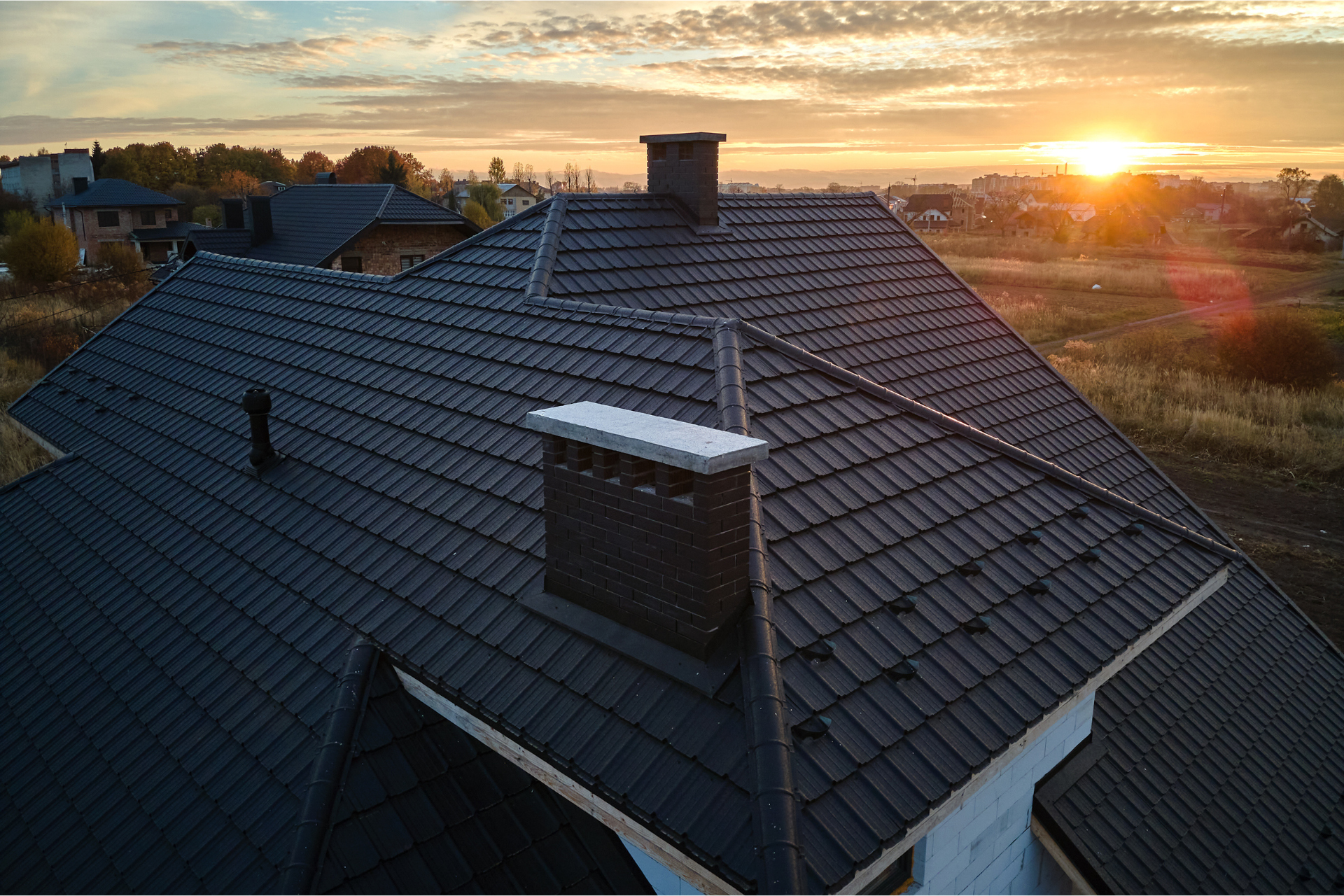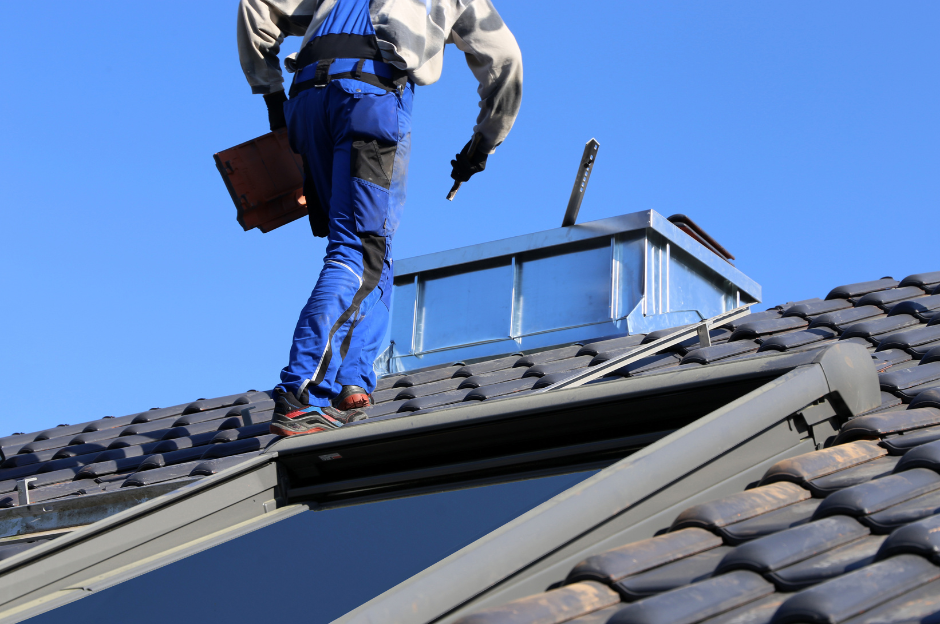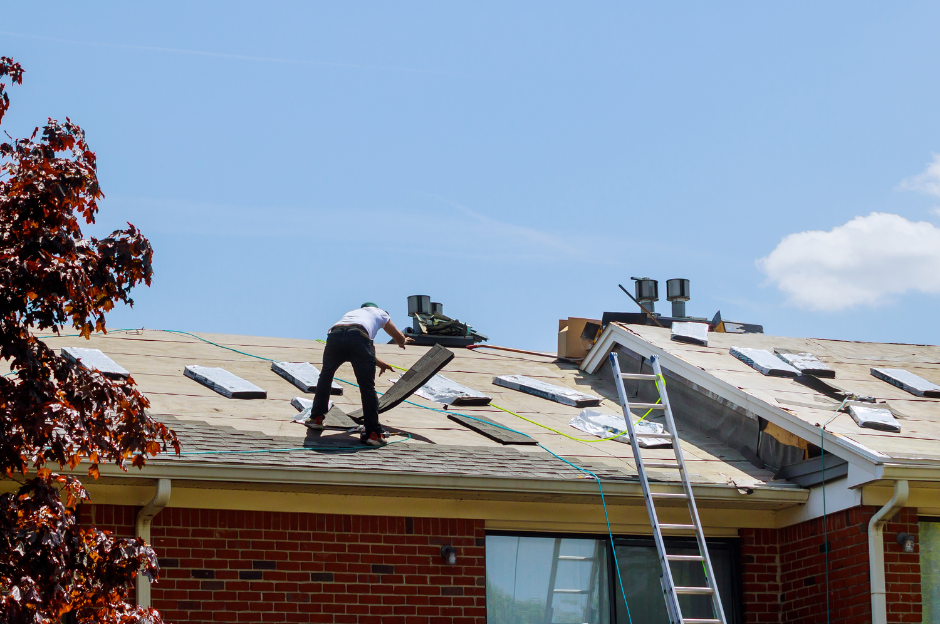Choosing the Best Roofing Solutions for Your Climate
June 21, 2024

The roof of your home is its first line of defense against the elements, making it essential to select roofing materials that can withstand the specific climate conditions in your area. Whether you live in a hot and sunny region, a cold and snowy climate, or somewhere in between, choosing the right roofing solutions can enhance energy efficiency, durability, and overall performance. In this comprehensive guide, we'll explore how different climates impact roofing needs, discuss the best roofing materials for various climates, and provide tips for selecting the ideal roofing solution for your home.
Understanding Climate Impact on Roofing
Climate plays a significant role in determining the performance and longevity of roofing materials. Factors such as temperature fluctuations, precipitation levels, humidity, wind exposure, and UV radiation intensity can all affect how well a roof performs over time. Here’s how different climates can influence your roofing choices:
Hot and Sunny Climates
In regions with hot and sunny climates, roofs are exposed to intense UV radiation and high temperatures throughout the year. The key considerations for roofing in these areas include:
Heat Resistance: Roofing materials should have high solar reflectance and emissivity to minimize heat absorption and reduce cooling costs.
Durability: Materials should be able to withstand prolonged exposure to UV rays without fading, cracking, or deteriorating.
Ventilation: Proper attic ventilation is crucial to prevent heat buildup and prolong the life of roofing materials.
Cold and Snowy Climates
Cold and snowy climates present unique challenges for roofing due to freeze-thaw cycles, heavy snow loads, and ice dam formation. Important factors to consider include:
Insulation: Effective insulation and attic ventilation help prevent heat loss and minimize ice dam formation.
Snow Load Capacity: Roofing materials should be able to bear heavy snow loads without collapsing or sustaining damage.
Ice Dam Prevention: Roofing designs that discourage ice dam formation, such as steep slopes and effective gutter systems, are beneficial.
Humid and Coastal Climates
Humid and coastal climates experience high levels of humidity, salt exposure (in coastal areas), and occasional severe weather events like hurricanes or tropical storms. Considerations for roofing in these regions include:
Moisture Resistance: Roofing materials should be resistant to moisture absorption and mold growth.
Wind Resistance: Strong winds associated with coastal storms require roofing materials that can withstand uplift forces.
Corrosion Resistance: In coastal areas, materials should be resistant to corrosion from salt air and humidity.
Temperate and Variable Climates
Regions with temperate climates experience moderate temperatures and variable weather patterns throughout the year. Roofing considerations may include:
Versatility: Roofing materials that perform well in both hot summers and cold winters are ideal.
Energy Efficiency: Materials with high thermal efficiency help maintain comfortable indoor temperatures year-round.
Weather Resistance: Roofing should be able to withstand rain, wind, and occasional temperature extremes without significant wear or damage.
Best Roofing Materials for Different Climates
Choosing the best roofing material for your climate involves evaluating factors such as durability, energy efficiency, maintenance requirements, and aesthetic appeal. Here are some of the most common roofing materials and their suitability for different climates:
Asphalt Shingles
Suitable Climates: Asphalt shingles are versatile and can be used in various climates, including temperate, hot, and cold regions.
Advantages: Affordable, easy to install, available in a wide range of colors and styles, moderate durability.
Considerations: Vulnerable to wind and hail damage, may have shorter lifespan in extreme climates.
Metal Roofing
Suitable Climates: Metal roofs are suitable for hot, cold, and humid climates, including coastal areas prone to salt exposure.
Advantages: Long lifespan (50+ years), durable, fire-resistant, reflects solar heat, sheds snow easily.
Considerations: Higher initial cost, expansion and contraction with temperature changes, noise during rain or hail.
Clay or Concrete Tiles
Suitable Climates: Clay and concrete tiles are ideal for hot and sunny climates with minimal freeze-thaw cycles.
Advantages: Long lifespan (50+ years), fire-resistant, excellent heat reflection, low maintenance.
Considerations: Heavyweight requires strong roof framing, higher cost, may crack in freeze-thaw climates.
Wood Shingles or Shakes
Suitable Climates: Wood shingles or shakes are suitable for temperate climates with moderate rainfall.
Advantages: Natural appearance, good insulation properties, can last 30+ years with proper maintenance.
Considerations: Requires regular maintenance (staining, sealing), susceptible to fire (unless treated), may rot in humid climates.
Slate Roofing
Suitable Climates: Slate roofing is best for cold climates with minimal freeze-thaw cycles.
Advantages: Extremely durable (100+ years), fire-resistant, low maintenance, elegant appearance.
Considerations: Heavyweight requires strong roof framing, higher installation cost, limited color options.
Synthetic Roofing Materials
Suitable Climates: Synthetic roofing materials like composite shingles or synthetic slate can be suitable for various climates depending on their specific properties.
Advantages: Lightweight, durable, fire-resistant, often made from recycled materials, lower maintenance.
Considerations: Longevity and performance vary by product, may not have the same aesthetic appeal as natural materials.
Tips for Choosing the Best Roofing Solution
1. Assess Your Climate and Weather Patterns
Research: Understand the specific climate conditions in your region, including temperature ranges, precipitation levels, and weather extremes.
Consult Professionals: Seek advice from roofing contractors or architects familiar with local building codes and climate considerations.
2. Consider Long-Term Durability and Maintenance
Lifecycle Cost: Evaluate the total cost of ownership, including installation, maintenance, and potential repairs over the roof's lifespan.
Material Lifespan: Choose roofing materials that offer durability and longevity appropriate for your climate and weather conditions.
3. Prioritize Energy Efficiency and Sustainability
Cool Roof Options: Consider roofing materials with high solar reflectance and emissivity to reduce cooling costs in hot climates.
Environmental Impact: Choose materials that are energy-efficient, recyclable, or made from sustainable sources.
4. Factor in Aesthetic Appeal and Architectural Style
Design Compatibility: Select roofing materials that complement the architectural style and enhance the curb appeal of your home.
Color Options: Consider the color and texture options available for different roofing materials to achieve the desired aesthetic.
5. Evaluate Installation Requirements and Costs
Roof Slope and Framing: Ensure that your roof structure can support the weight and installation requirements of your chosen roofing materials.
Installation Complexity: Consider the labor and installation costs associated with different roofing materials, especially for complex roof designs.
6. Explore Additional Features and Warranties
Warranties: Review manufacturer warranties and installation guarantees to ensure coverage for potential defects or issues.
Enhanced Features: Explore optional features such as impact resistance, wind ratings, or fire ratings depending on your climate's specific risks.
Henry Brothers Blog

Multi-family buildings pose unique challenges for roofing—requiring durable, efficient, and cost-effective solutions that serve multiple households simultaneously. Selecting the right system and partner can significantly impact long-term maintenance and energy bills. Common Roofing Challenges in Multi-Family Properties Large surface areas Multiple penetrations (vents, HVAC units) Noise and disruption during installation High foot traffic for maintenance Energy efficiency Efficient Roofing Materials TPO (Thermoplastic Polyolefin): Lightweight, reflective, and energy-efficient. Ideal for flat or low-slope roofs. Modified Bitumen: Offers durability and weather resistance. Works well for larger structures. Metal Roofing: Long-lasting and low-maintenance. Higher upfront costs but excellent ROI. Asphalt Shingles: Budget-friendly and easy to repair. Better for pitched multi-family homes. Affordability Strategies Bulk Purchasing Discounts: Roofers often offer lower rates for large-scale projects. Energy Rebates and Tax Credits: Cool roofing materials may qualify for incentives. Roof Coatings: Extend lifespan and defer full replacements. Preventive Maintenance Plans: Regular inspections reduce major repair costs. Partnering with the Right Contractor Choose a roofing contractor experienced in multi-family dwellings. Look for: References from similar projects Warranty offerings Insurance and licensing Clear timelines and communication protocols

Your roof is one of the most defining features of your home’s architecture. A well-designed roof complements the style, era, and character of your house, enhancing both curb appeal and value. Whether you own a modern home, a Victorian masterpiece, or a Mediterranean villa, choosing the right roofing materials and design is essential. This article explores custom roofing solutions for different architectural styles, ensuring your roof is both aesthetic and functional. 1. Why Custom Roofing Matters A one-size-fits-all approach doesn’t work for roofing. Here's why customization is key: 🏡 Preserves Architectural Integrity The roof should match the home's era and design. A poorly chosen roof can clash with the architecture and reduce property value. 💰 Boosts Home Value & Curb Appeal A well-matched roof enhances visual appeal, making your home stand out. Homebuyers prefer houses with roofs that fit the overall design. 🌦 Enhances Durability & Efficiency Custom roofing accounts for climate, slope, and insulation. Choosing the right materials ensures longer roof life and energy efficiency. 2. Best Roofing Materials for Different Architectural Styles 🏗 Modern & Contemporary Homes Modern architecture focuses on clean lines, minimalism, and energy efficiency. Best Roofing Options: ✅ Flat Roofs – Achieve a sleek, contemporary look. ✅ Metal Roofing – Durable and complements modern aesthetics. ✅ Green Roofs – Eco-friendly and visually striking. ✅ Solar Panels – Integrate renewable energy solutions. 🏰 Victorian & Gothic Revival Homes These homes have steep-pitched roofs, turrets, and elaborate detailing. Best Roofing Options: ✅ Slate Tiles – Classic, long-lasting, and historically accurate. ✅ Wood Shingles – Adds charm and natural beauty. ✅ Decorative Metal Accents – Enhances ornate Victorian designs. 🏝 Mediterranean & Spanish-Style Homes Inspired by European coastal homes, these feature stucco walls and curved archways. Best Roofing Options: ✅ Clay or Terracotta Tiles – Traditional, weather-resistant, and elegant. ✅ Concrete Tiles – Durable and available in various textures and colors. ✅ Synthetic Spanish Tiles – Modern, lightweight alternatives with classic appeal. 🌲 Rustic & Cabin-Style Homes These homes emphasize natural materials and a cozy aesthetic. Best Roofing Options: ✅ Wood Shakes – Blends seamlessly with wooded surroundings. ✅ Metal Roofing (Rustic Finish) – Durable with a weathered, natural look. ✅ Green Roofs – Enhances sustainability and insulation. 🏡 Colonial & Traditional Homes These timeless homes focus on symmetry and classic proportions. Best Roofing Options: ✅ Asphalt Shingles – Affordable and available in classic shades. ✅ Slate Roofing – Elegant and historically accurate. ✅ Copper or Metal Accents – Enhances historic charm. 🏛 Mid-Century Modern Homes This style features low-sloped roofs, large windows, and open spaces. Best Roofing Options: ✅ Flat or Low-Slope Roofs – Clean, minimalistic aesthetic. ✅ Rubber or Membrane Roofing – Ideal for low-pitch roofs. ✅ Green or Living Roofs – Complements eco-conscious designs. 🏰 Tudor-Style Homes Tudor homes have steeply pitched gables and decorative half-timbering. Best Roofing Options: ✅ Wood or Synthetic Shake Shingles – Traditional and authentic. ✅ Slate Roofing – Enhances historic charm and durability. ✅ Architectural Asphalt Shingles – Mimics wood or slate at a lower cost. 3. Custom Roofing Features to Consider Beyond materials, adding customized elements can elevate your roof’s design. 🔹 Roof Color & Texture Dark roofs enhance historic and formal homes. Light-colored roofs reflect heat, ideal for warm climates. Textured materials (slate, shakes) add visual depth. 🏠 Roof Shape & Pitch Steep roofs fit Gothic and Victorian styles. Flat or low-sloped roofs match modern homes. Custom pitches enhance energy efficiency and durability. 🔆 Skylights & Roof Windows Adds natural light and enhances ventilation. Works well in modern, contemporary, and rustic homes. 🌞 Solar Roofing & Smart Technology Solar shingles blend seamlessly into modern & eco-friendly homes. Smart roofing systems adjust ventilation & insulation automatically. 4. Custom Roofing: How to Get Started 1️⃣ Consult a Roofing Expert Work with an architect or contractor specializing in custom roofs. Ensure they understand historical accuracy and climate considerations. 2️⃣ Choose High-Quality Materials Invest in durability, energy efficiency, and aesthetics. Select roofing that aligns with your home’s style and longevity needs. 3️⃣ Consider Long-Term Costs & ROI Some materials have higher upfront costs but last longer and increase home value. Energy-efficient options can reduce heating and cooling expenses. 4️⃣ Verify Local Building Codes Some roofing styles require special permits. Ensure compliance with HOA guidelines and historical district regulations.


